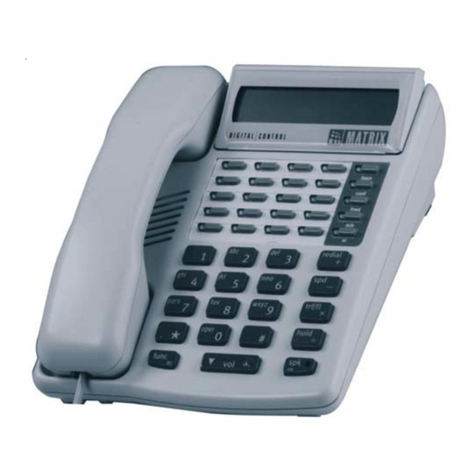
Contents
Copyright ...............................................................................................................................................4
Warranty Statement ..............................................................................................................................5
Welcome..................................................................................................................................................... 7
Contents ..................................................................................................................................................... 9
Features and Facilities............................................................................................................................ 11
Abbreviated Dialing .............................................................................................................................11
Alarm ...................................................................................................................................................14
Allowed and Denied Lists ....................................................................................................................15
Answering Calls ..................................................................................................................................17
Auto Call Back .....................................................................................................................................17
Auto Redial ..........................................................................................................................................18
Barge-In ..............................................................................................................................................20
Behind the PBX Applications ..............................................................................................................21
Boss Ring ............................................................................................................................................22
Busy Hunting Group ............................................................................................................................22
Call Duration Control ...........................................................................................................................23
Call Follow-Me ....................................................................................................................................26
Call Forward ........................................................................................................................................26
Call Park ..............................................................................................................................................28
Call Pick Up .........................................................................................................................................29
Call Progress Tones ............................................................................................................................30
Call Splitting ........................................................................................................................................32
Call Transfer ........................................................................................................................................33
Call Transfer-On Busy .........................................................................................................................34
Cancel Station Features ......................................................................................................................35
Class Of Service (COS) ......................................................................................................................36
Conference ..........................................................................................................................................39
Continued Dialing ................................................................................................................................39
Conversation Recording ......................................................................................................................40
Day and Night Modes ..........................................................................................................................40
Default the Configuration ....................................................................................................................41
Demonstration of Tones ......................................................................................................................41
Department Call ..................................................................................................................................42
Direct Inward Dialing (DID) .................................................................................................................43
Direct Outward System Access (DOSA) .............................................................................................44
Distinctive Rings ..................................................................................................................................46
Do Not Disturb (DND) .........................................................................................................................47
Dynamic Lock ......................................................................................................................................47
External Call ........................................................................................................................................48
External Call Forward (ECF) ...............................................................................................................49
Executive/Secretary ............................................................................................................................50
Flash Timer .........................................................................................................................................50
Flexible Numbers ................................................................................................................................51
Hold .....................................................................................................................................................52
Hotline .................................................................................................................................................52
Installation ...........................................................................................................................................54
Internal Call .........................................................................................................................................57
Internal Call Restriction .......................................................................................................................57
Interrupt Request ................................................................................................................................58
Introduction .........................................................................................................................................59
Last Number Redial ............................................................................................................................61
Message Wait .....................................................................................................................................61





























